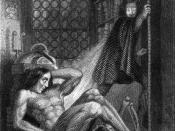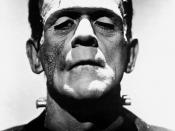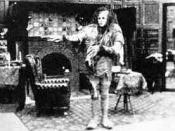The Gothic genre is a very fascinating one because it is one of mystery, suspense, and high emotion. With intriguing elements and its out of the ordinary style, the gothic genre has captivated readers for centuries. Mary Shelley's "Frankenstein" is a classic gothic novel which has been adapted into a film directed by Kenneth Branagh. This film can be perceived as a typical gothic piece because the archetypal elements such as dark setting, horror, and suspense are apparent. However, in the film adaptation of Emily Bronte's Wuthering Heights, directed by Peter Kosminsky, it is harder to identify the gothic elements as they are more obscure, therefore making it difficult to recognize as a gothic work. Although there is a vast difference between the two films, one can see how they both classify as films of the gothic genre. They may contain different Gothic elements, especially because Shelley's Frankenstein is more of a horror film, while Bronte's "Wuthering Heights" is more of a romance.
Despite the fact that the gothic elements differ in the two films, there is no doubt that Emily Bronte's Wuthering Heights is a gothic film. The Byronic hero, melodrama, and the metonymy of gloom and horror are typical characteristics that categorize Emily Bronte's Wuthering Heights as gothic compared to the archetype Mary Shelley's Frankenstein.
The Byronic hero or "anti-hero" is a critical gothic element. It can be described as a character in which the viewer roots for and sympathizes with even though they may have traits that make them seem cold-hearted or even mad. This character type is reflected in both the protagonists in Emily Bronte's Wuthering Heights and Mary Shelley's "Frankenstein". Although the characters of the films may both be considered Byronic heroes, the two characters differ greatly. Victor Frankenstein's monster is one of...


